Tom’s Hardware CES 2020 Awards: Folding Tech & AMD Stand Out in an Odd Year

CES 2020 wasn’t the most exciting of years for our core coverage areas. Neither Intel nor AMD had desktop platform launches, which meant almost no new motherboards (unless you count the expensive Intel Ghost Canyon NUC and its Compute Element). The only GPU news was limited to Intel’s upcoming mobile DG1 and AMD’s expected mid-range Radeon RX 5600 XT.
So we were left to find the best of the rest of the PC, robot, and related tech on the show floor and at various suites on the Las Vegas Strip this year. That included a foldable tablet/laptop hybrid X1 Fold from Lenovo, helped along by Intel’s Lakefield, the first mass-produced 3D-stacked processor, and AMD. Team red made its way into our favorite gaming laptop of the show, the Asus ROG Zephyrus G14, while also announcing the kind-of-insane 64-core, 128-thread Ryzen Threadripper 3990X.
Best Gaming Laptop: Asus ROG Zephyrus G14
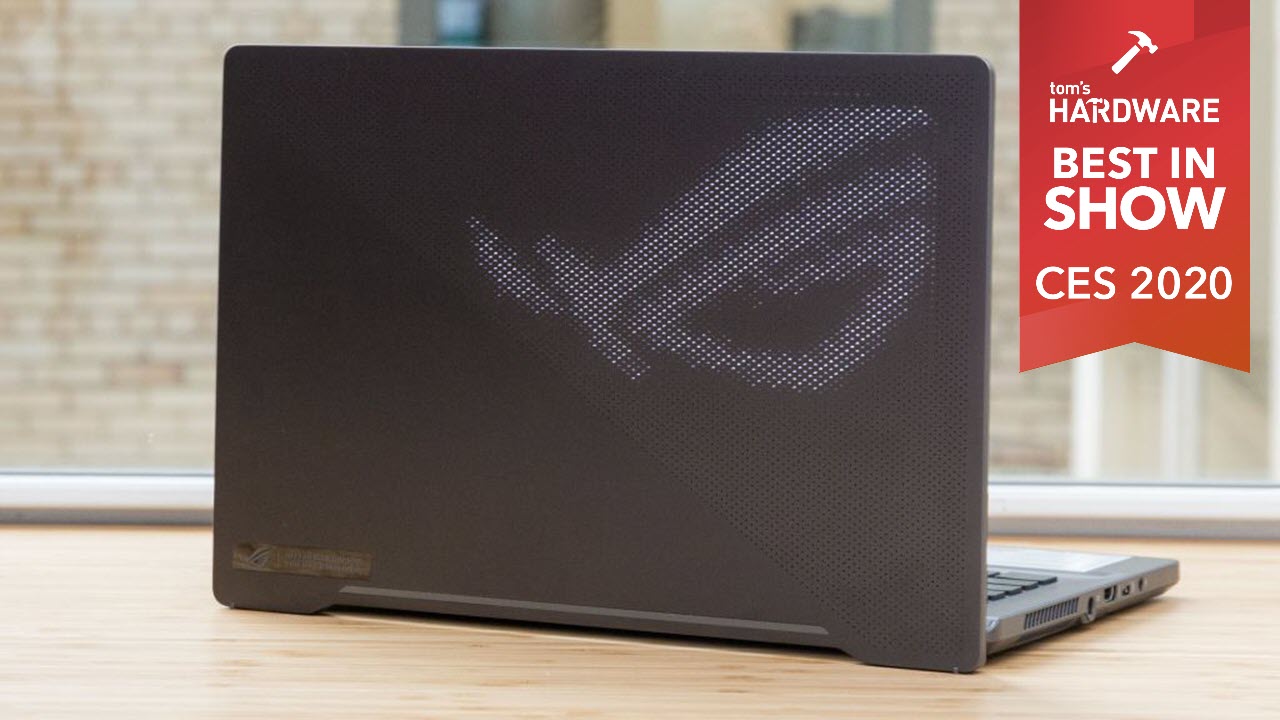
On paper, the Asus ROG Zephyrus G14 is brimming with potential. Take the efficient 35W versions of AMD’s latest Ryzen 4000 series processors and pair them with Nvidia’s RTX graphics in a fairly-compact 14-inch chassis that mixes both classy colors and gamer edge. Then put in a Pantone-calibrated, 120 Hz display. That all equals a ton potential before you even talk about the extra bells and whistles, like USB Type-C charging, an SSO power button and an LED matrix on the lid to customize the machine. -- Andrew E. Freedman
Read more: Asus' ROG Zephyrus G14, G15 Deliver AMD Ryzen 4000 In a Thin Package With a Light-up Lid
Best Laptop: Dell XPS 13
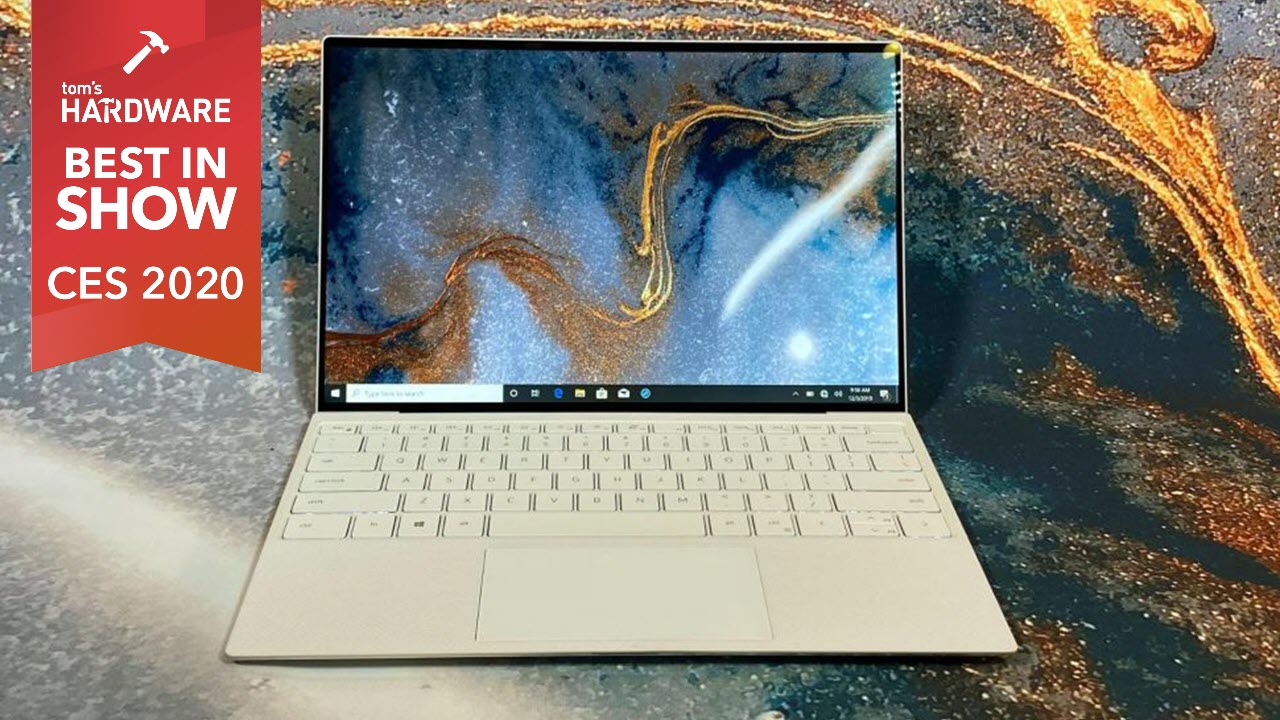
Sometimes a few small tweaks can really freshen things up. The XPS 13 has all but lost its bottom bezel, following up on the dream the original InfinityEdge display suggested could come true. That screen has also switched aspect ratios to 16:10, which gives you more vertical space.
The Dell XPS has shrunk down dramatically, but maintains build quality with machined CNC aluminum. Oh, and it’s on Intel’s 10nm Ice Lake CPUs, too. -- Andrew E. Freedman
Read more: Dell XPS 13 Gets 10th Gen Chips, Loses Bottom Bezel
Get Tom's Hardware's best news and in-depth reviews, straight to your inbox.
Best Gaming Desktop: MSI MEG Aegis Ti5
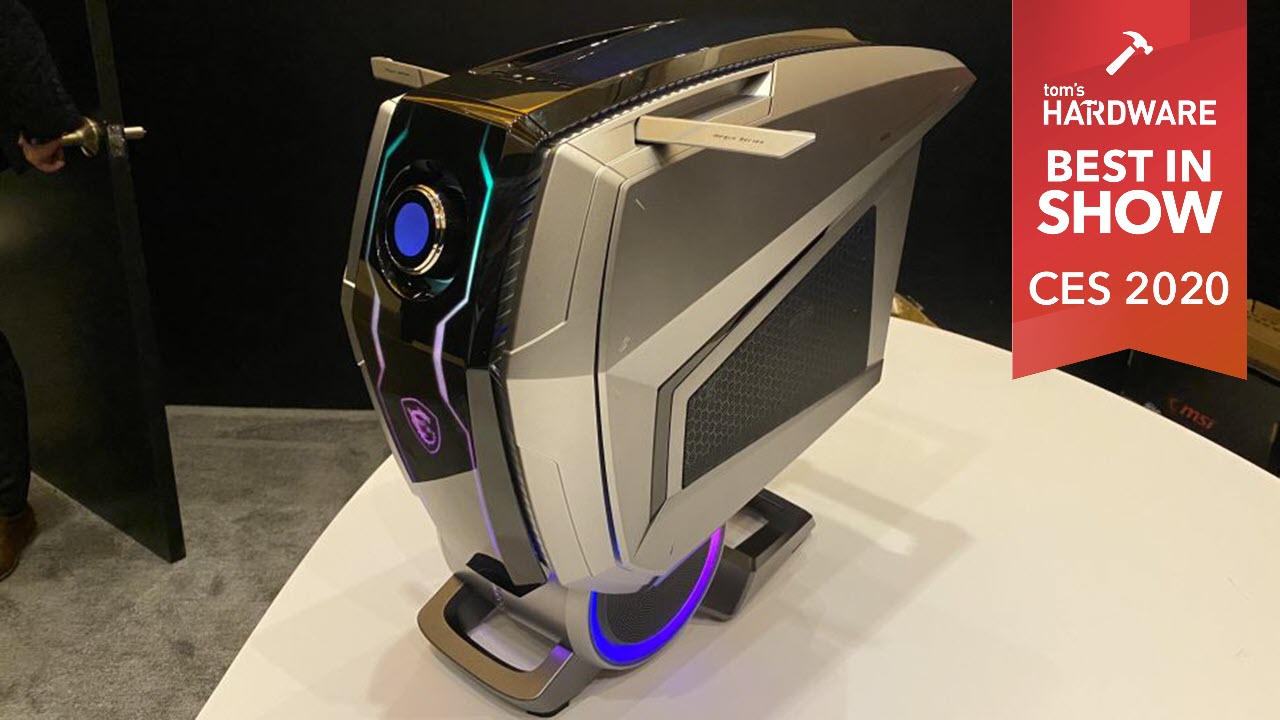
MSI’s MEG Aegis Ti5 is pure CES. By that, I mean it’s an ambitious project that’s trying some new things, even if there’s a bit of weirdness to it. We know it will go up to an Intel Core i9 with the latest Nvidia graphics and that the chassis separates the primary components into separate chambers for cooling.
But this thing will also have 5G support (should that eventually proliferate in your area) and a nifty little dial to change settings, profiles and launch games without digging into menus on your desktop. The whole thing looks like it was plucked out of the center of a sports car, and it will probably have a price to match. -- Andrew E. Freedman
Read more: MSI MEG Aegis Ti5 Is an Ambitious 5G Gaming Desktop
Best CPU: AMD Threadripper 3990X
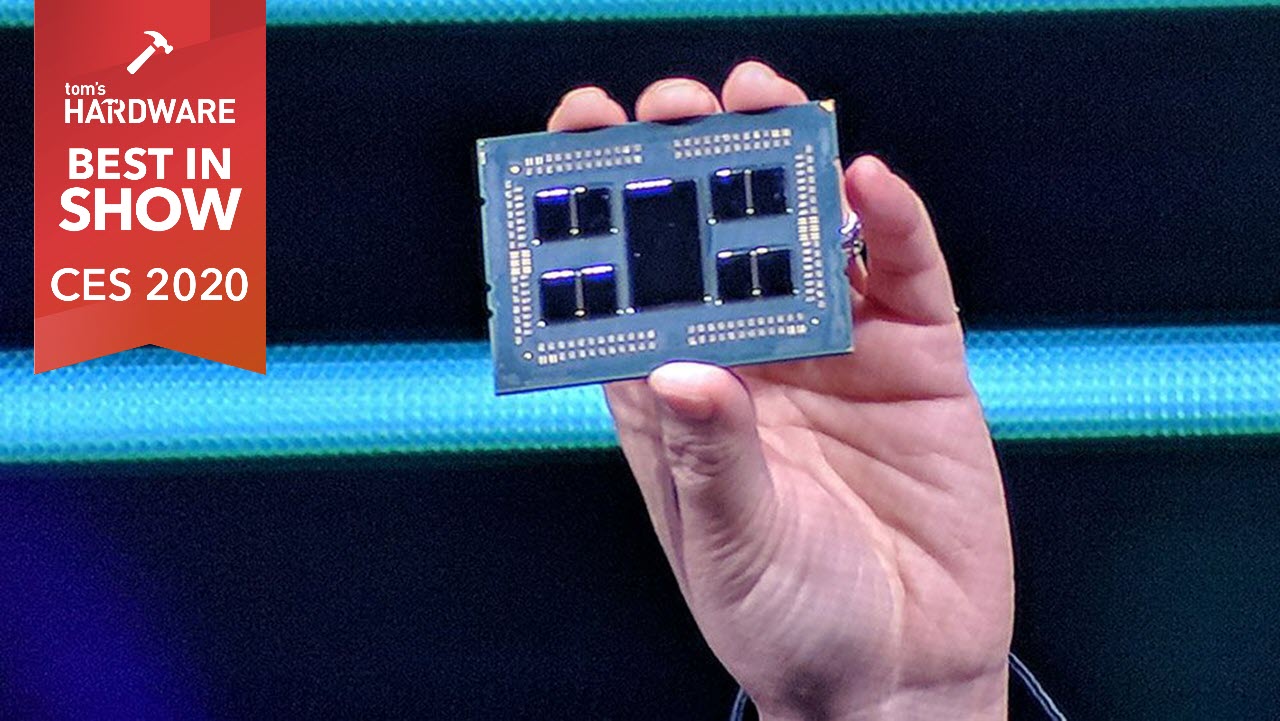
AMD’s Phoenix-like rise from the ashes of the CPU market felt complete when it destroyed Intel’s long-held performance lead in the high end desktop with the 32-core Threadripper 3970X, a processor that outweighed Intel’s finest by such a large margin that the company doesn’t even have a response.
AMD adds insult to injury with its release of the beastly Threadripper 3990X, a 64-core, 128-thread beast that comes with an almost-ludicrous 288MB of total cache. Given what we already know about the 7nm process paired with the Zen 2 architecture, and how that pairing performs in the other Threadripper 3000 processors, we know this processor will set the new benchmark for the most demanding high-end work.
AMD definitely set a high bar during its CES press conference when it demoed a single $3,990 Threadripper 3990X chewing through a v-ray render job faster than two of Intel’s Xeon 8280 processors that retail for an eye-watering $10,000 apiece. That sets the stage for a whole new level of both performance and value, which you’ll be able to see for yourself when we get the chips in our labs later this month. -- Paul Alcorn
Read more: AMD Launches Threadripper 3990X and Ryzen 4000 'Renoir' APUs
Best VR Headset: Pico VR Glasses
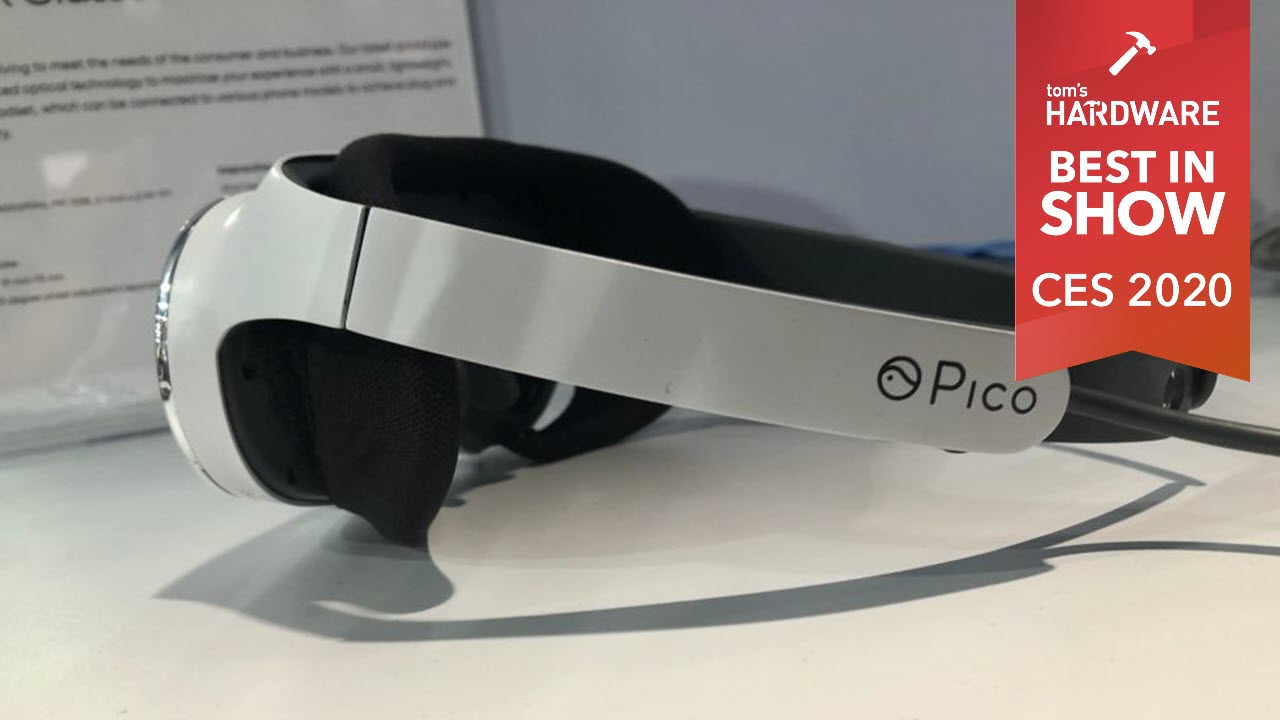
The Pico VR Glasses are unlike any other VR headset currently available. While others can force wearers to carry over a pound of hardware on their cranium, this smartphone-connected HMD takes a glasses-like form factor, weighing just 0.26 pounds at 6.3 x 3.1 x 1 inches.
The prototype we demoed still has some design issues to fix before it’s ready to hit the market, but the VR Glasses’ ingenious design makes entering VR simpler, more comfortable and better-looking. -- Scharon Harding
Read more: Pico's VR Glasses May Be the Slickest VR Headset Ever
Best Mouse: Asus ROG Chakram

The ROG Chakram gives gamers a lot of options through unique swappable parts that change the look, feel and performance of the mouse. In just a few seconds you can pop off the left and right mouse buttons and change their Omron switches for units with a different type of clickiness. And if you’d rather see something other than the ROG logo in RGB, it’s easy to take that off and replace it with a badge that has your own design. You even have a choice or two different thumb joysticks for the side (or you can choose to have none at all).
Design tricks like a magnetic palm rest means you can do most of these customizations without tools. Plus, Asus didn’t skimp on premium features, like on-the-fly DPI adjustment and three different connectivity options. -- Scharon Harding
Read more: Asus ROG Chakram Gaming Mouse Lets You Swap Switches, DPI and Even Its Logo
Best Chassis: InWin B1

We saw several cases at CES 2020, including InWin’s own massive voice-and-gesture controlled Diey hanging chandelier chassis. But at the end of the day, after most of our meetings, it was the company’s own tiny Mini-ITX B1 case that stole our jaded hearts. Looking like nothing so much as a Portal turret mixed with some Jetsons-like retro-future aesthetics, the B1 is a compact 11.9 x 9.4-inch case made up of concentric, vented ovals topped by tempered glass, which can stand up straight or relax on its side via an included deet.
At 4.3 inches tall, it makes room for the smallest Intel and AMD stock coolers and includes a custom 200-watt power supply, but no room for a dedicated graphics card. For an APU build for light gaming or a moderate office or living room PC with a mid-century modern look, the InWin B1 might just be perfect. We can’t wait to build a system in this case when it arrives in a few months, for an estimated $85. -- Matt Safford
Read more: InWin Showcases Tiny and Cute B1 Case at CES 2020
Best Robot: Pollen Robotics Reachy

The appropriately-named Reachy is a torso robot (no legs) that uses its advanced arms and pincer hands to lift and manipulate objects which weigh as much as 500 grams. The automaton also has a dual-camera head that it uses for image recognition and a built-in microphone it can use for voice recognition. A pair of antennas on its head move around to help it express emotion.
Reachy’s potential is nearly limitless as it can be programmed to cook, play tic tac toe or even clean up a bit. Best of all, Reachy is powered by a Raspberry Pi 4 B running Raspbian OS so it’s easy to program. -- Avram Piltch
Read more: Raspberry Pi-Powered Reachy Robot Can Grab Almost Anything, Including Your Heart
Best Cooling: Cooler Master MasterLiquid Vivid
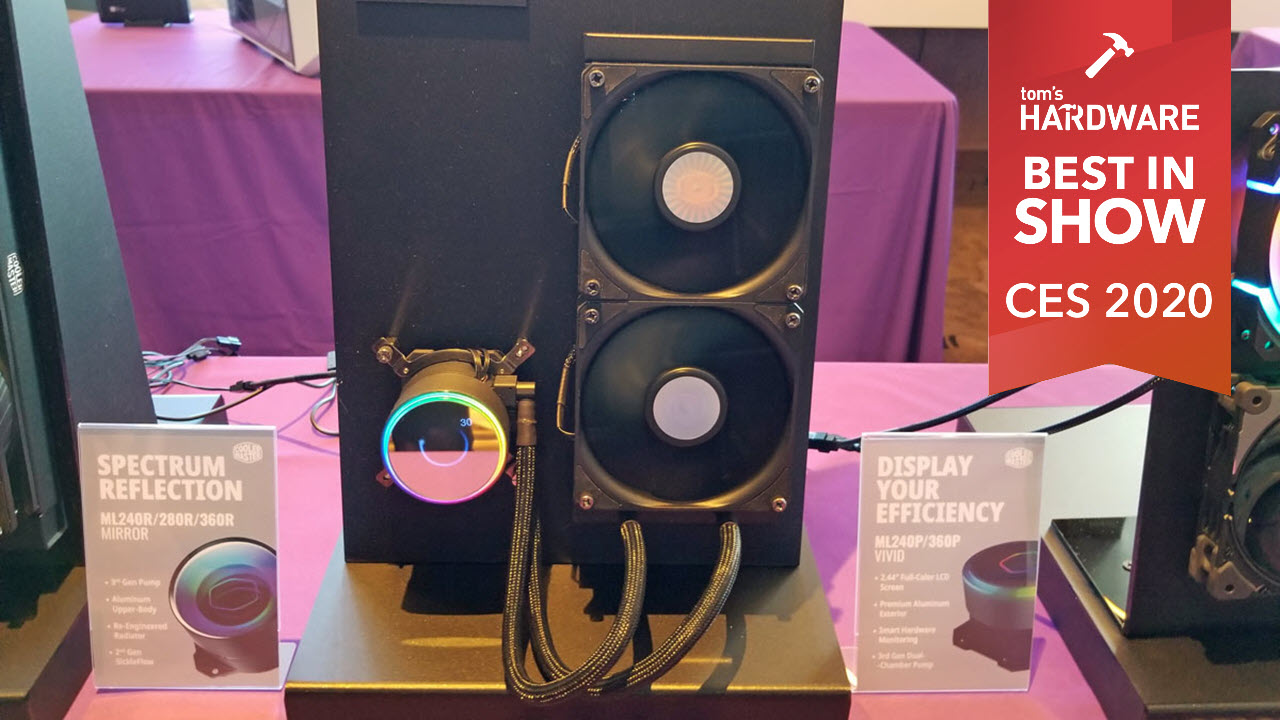
When you’re building a PC, you can never have too many screens. These days, you can get motherboards with status displays and chassis with LED panels on the front or translucent screens in the side panel. But Cooler Master is breaking new ground with its MasterLiquid Vivid AIO cooler.
Available with either a 240mm or 360mm radiator when it launches later this spring, the Vivid features a 2.4-inch, 320 x 240 LED screen that lives on top of the CPU block. By default, the screen will display status information such as temperature and fan speed, but you can customize it and show any image you want or even a video. -- Avram Piltch
Read more: Cooler Master Launching AIO Cooler With an LED Screen on the Pump
Best Storage: Adata XPG Sage
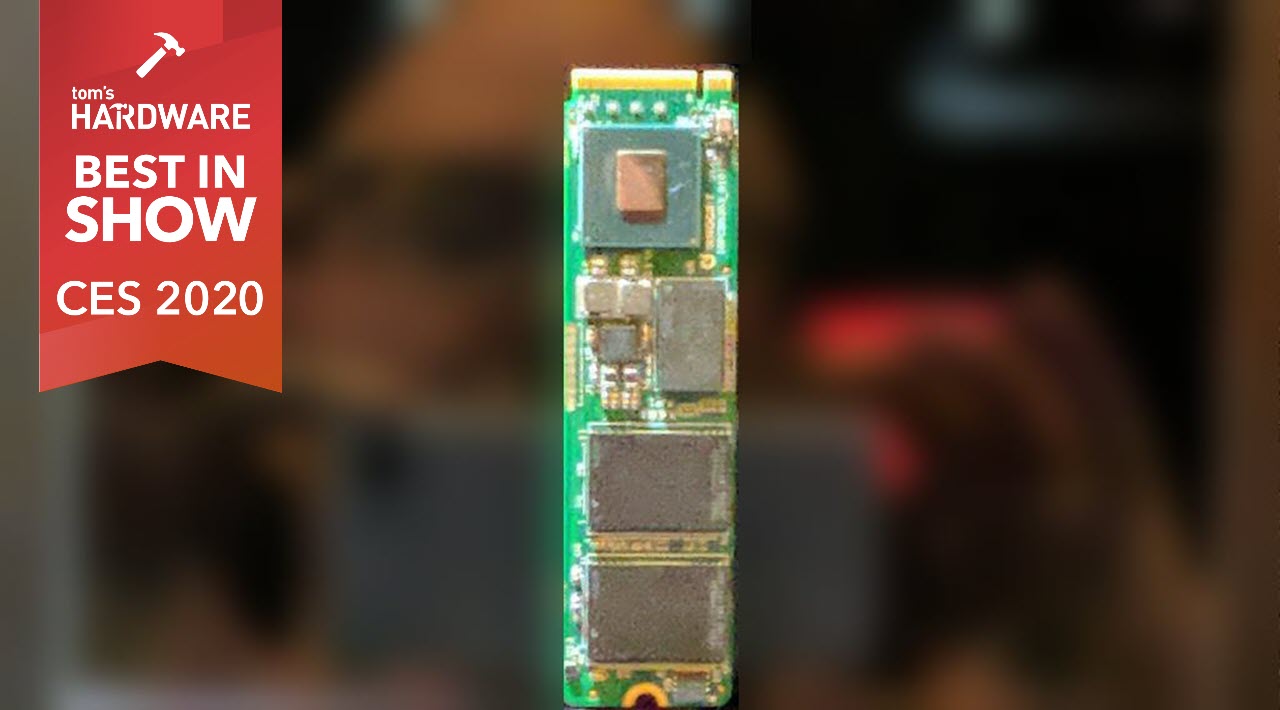
In 2019, we saw the first PCIe Gen 4 SSDs and were impressed with their 4.9 GBps transfer rates. But why settle for that when you can get an M.2 PCIe SSD that reads and writes at 7.1 and 6 GBps respectively.
Available later this year, the Adata XPG Sage provides those transfer rates, along with an unheard-of 1 million / 800,000 read / write IOPs. With capacities of up to 4TB, the Sage is among the first drives to utilize the speedy Innogrit Rainier controller. That’s a ton of performance or a consumer drive. -- Avram Piltch
Read more: Adata Shows Off SSD with 1 Million IOPS, 7,000 MBps Reads
Best Charging: Aukey Omnia Series
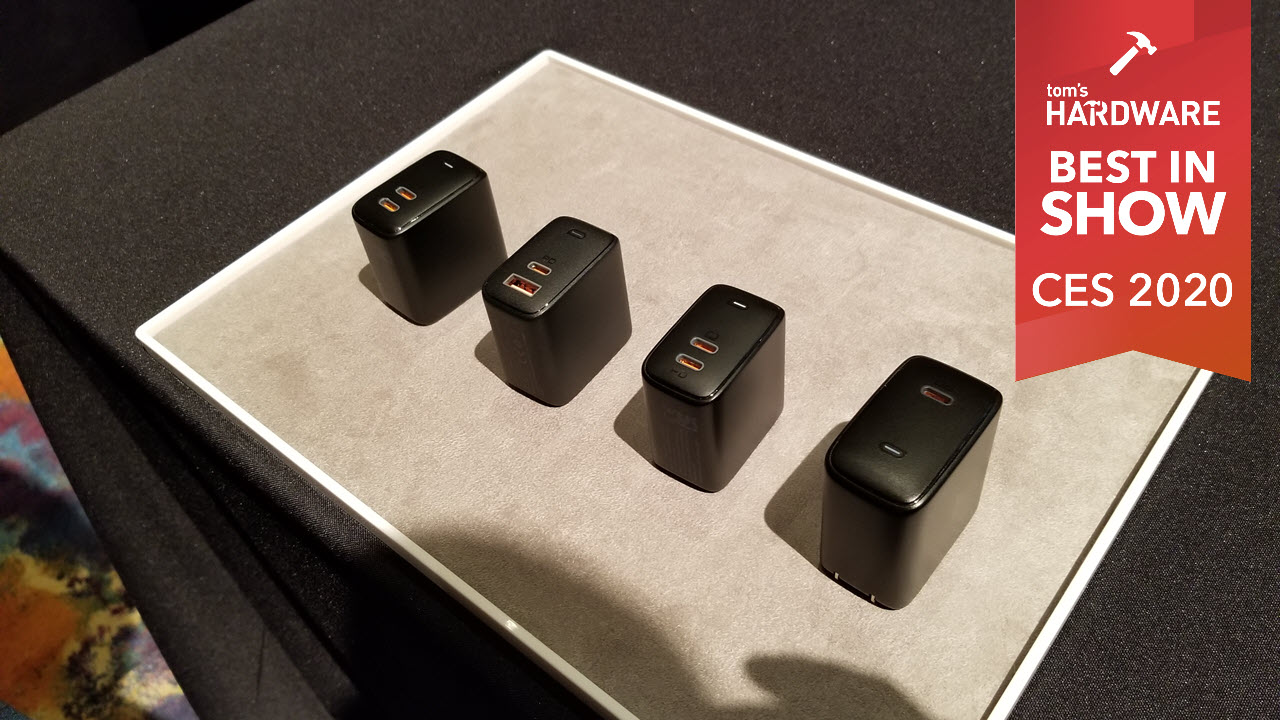
From the over-the-air wireless charging demos to convenient portable batteries, CES 2020 was packed with power delivery. The most useful and innovative new charging technology comes courtesy of Aukey’s Omnia Series of super-tiny laptop chargers.
Thanks to their gallium nitride (GaN) chips, these chargers are significantly smaller than silicon-based models. Available in capacities ranging from 61 to 100 watts, the Omnia chargers are the tiniest we’ve ever seen, by a comfortable margin. The 61-watt model is a mere 1.7 x 1.7 x 1.2 inches (43x 43 x 30mm) which makes it 66 percent smaller than a MacBook charger and noticeably smaller than another leading GaN charger, the 1.9 x 1.9 x 1.2-inch (48 x 48 x 30 mm) RavPower PD Pioneer 61W. Even the 100-watt model will fit comfortably in your pocket as it’s just 2.1 x 2.1 x 1.2 inches (54 x54 x 30 mm). -- Avram Piltch
Read More: Aukey's New Laptop Chargers Could Be Smallest Ever
Best Monitor: Asus ROG Swift PG32UQX

After showing off what would become the first mini-LED PC monitor to hit the market at CES 2019, Asus used CES 2020 to debut what should be a more affordable mini-LED monitor that targets gamers instead of professionals. The 32-inch PG32UQX will arrive this year with an impressive 1,152 local dimming zones and hit a brilliant 1,400 nits brightness. Add 4K resolution, and we’re hoping for HDR delivery that blows anything currently available out of the water.
Including G-Sync Ultimate and a 144 Hz refresh rate is enough to make gamers drool, and that’s before we get to the cool styling that outshines Acer’s 1,400-nit monitor and includes a multi-textured back and logo projector in the base. There’s no price yet, but we’ll definitely be keeping our eyes peeled.
Best Innovation: Lenovo ThinkPad X1 Fold
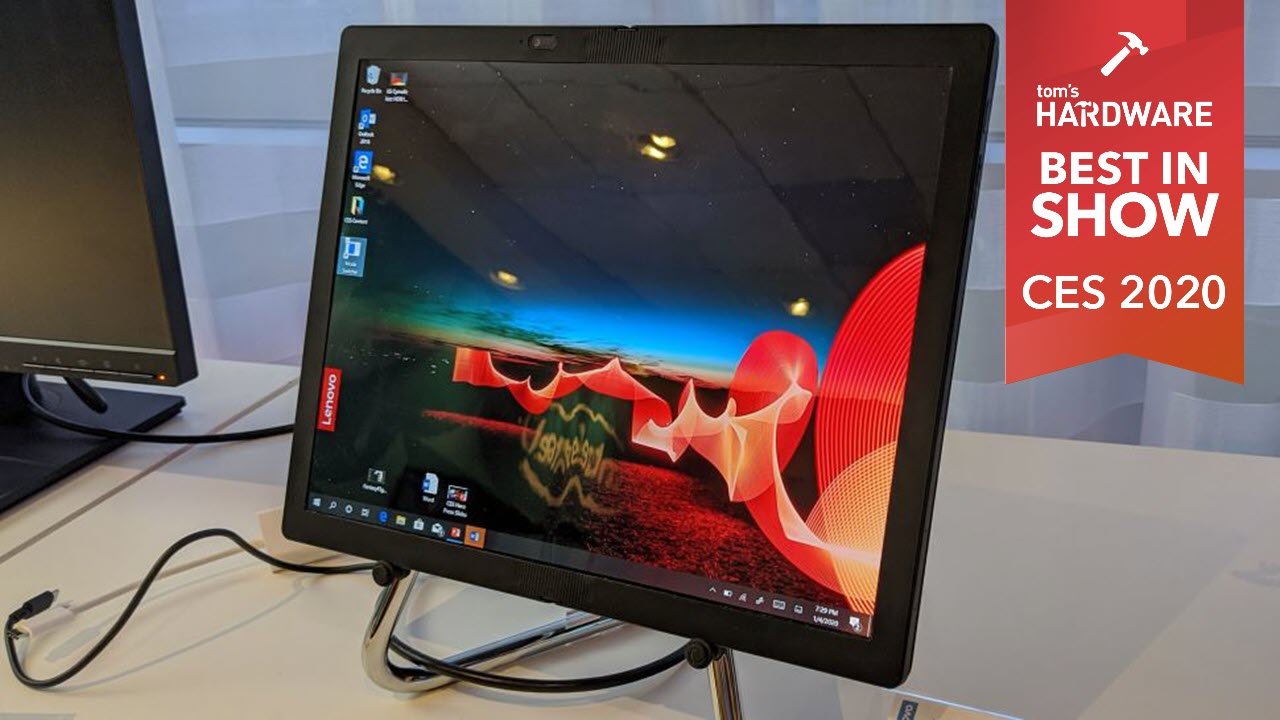
Lenovo’s ThinkPad X1 Fold wasn’t the only foldable at CES 2020. Dell also had Projects Ori and Duet, and Intel had its Horseshoe Bend prototype. But only Lenovo has put a price and release window on its device.
The Fold is also the first out of the gate with a bunch of new technologies, including 13.3-inch flexible OLED, what we believe to be Intel’s Lakefield technology with 3D chip stacking and some serious promises about durability. The company is shipping with Windows 10 Pro, though, which won’t take full advantage of Lakefield or the flexible form factor, so there is some risk here. -- Andrew E. Freedman
Read more: Lenovo ThinkPad X1 Fold Has a 13.3-Inch Foldable OLED Screen
Best Mixed Reality: Nreal Light
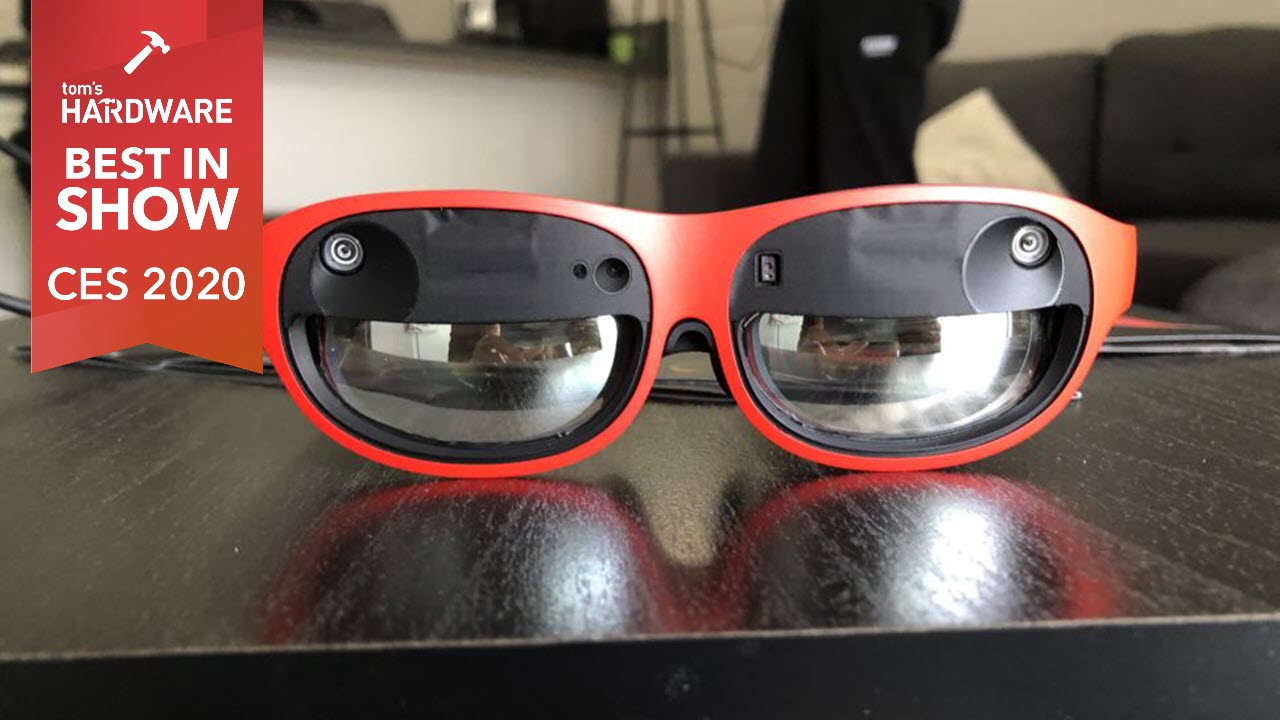
The Nreal Light mixed reality (MR) glasses kicked things up a notch this year, showing off a well-working UI called that can depict any native Android app in AR the size of an apartment wall. With Nebula, apps like Netflix and YouTube look and work in a familiar fashion, except in the form of a 1,000 nit AR display.
MR means you can also interact with what you see. By downloading Nreal’s app, an Android phone with a USB-C connection becomes a controller for the glasses with 3-degrees of freedom. Using your phone you can open multiple apps in the glasses and resize and rearrange them. We even got to game, all with a crisp image at 1080p. With a ready and intuitive UI, we can’t wait to see how the MR glasses fare in the consumer market. -- Scharon Harding
Read more: Nreal Light Mixed Reality Glasses Turned My Favorite Apps Into Massive, Mesmerizing AR
Best Lighting: Lian Li Strimer Plus
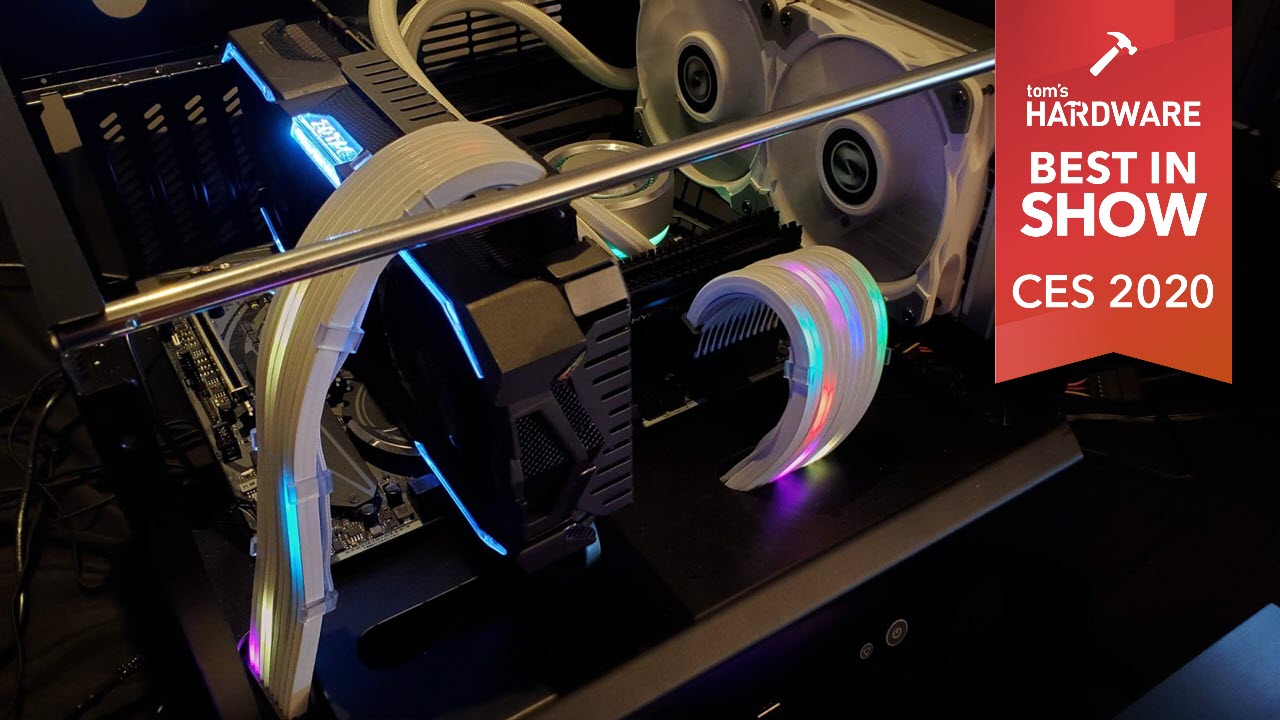
We get it. Not everyone’s a fan of RGB, particularly when it creeps its way into seemingly every component, and raises the price. But Lian Li’s Strimer is basically a set of ATX or PCIe extension cables, so no one’s pushing you to buy them if you aren’t interested. But if you like the idea of adding a complex light show to your cables, Lian Li’s Strimer Plus can’t be beat. We liked the original model well enough, but it wasn’t easy to turn off, had a tendency to come apart during installation, and left a lot of room for refinement.
The Strimer Plus, which the company says will arrive in February for $59.99 for the ATX cable and $39.99 for the 8-pin graphics card cable, looks miles better when on or off, supports many more visual effects thanks to an RGB controller box (which also includes an option for turning it off), and is also much brighter and more solidly built than the original RGB extension cable kit. Sure, if you hate RGB, the Strimer Plus isn’t going to make you a fan. But if you’re after an easy way to add some eye-catching lighting to the inside of your case, the Strimer Plus is well worth considering. We can’t wait to put it to use in a new RGB-focused build.
Tom's Hardware is the leading destination for hardcore computer enthusiasts. We cover everything from processors to 3D printers, single-board computers, SSDs and high-end gaming rigs, empowering readers to make the most of the tech they love, keep up on the latest developments and buy the right gear. Our staff has more than 100 years of combined experience covering news, solving tech problems and reviewing components and systems.
-
bigdragon That Asus Zephyrus G14 is impressive! Same goes for the new NVME SSD products coming out. I'm glad I waited to upgrade my desktop.Reply
I am rather disappointed in the lack of action in the tablet 2-in-1 market though. Performance and build quality have stagnated there, unfortunately. -
g-unit1111 Oh man how could the Charmin Poop Time Robot Pal not make best robot? Heresy!Reply
https://www.androidauthority.com/charmin-ces-2020-1071840/
:evil:
